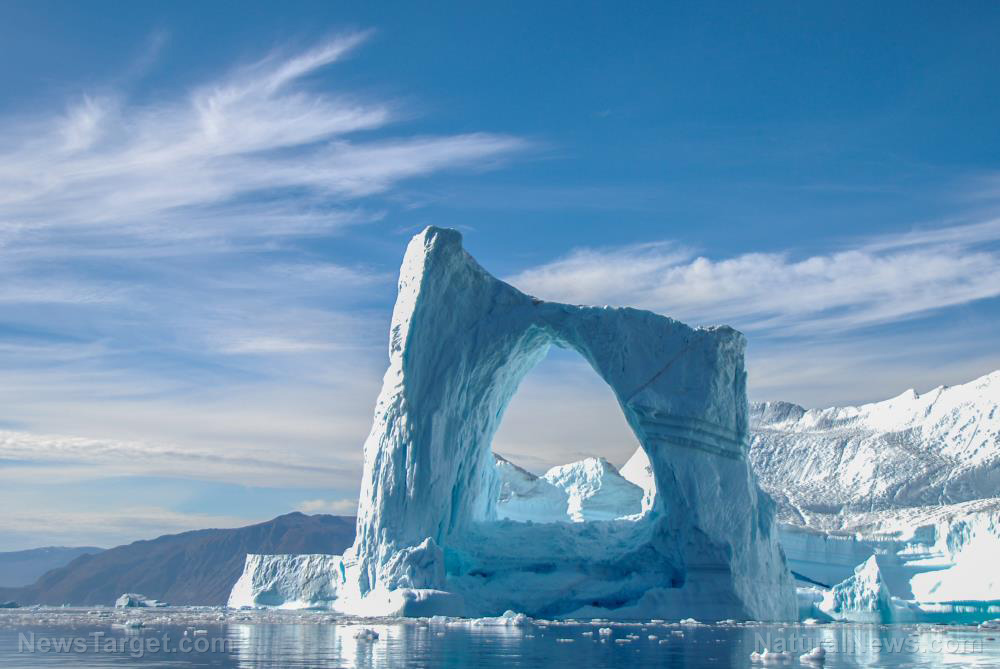Ice cores from top-secret Army base reveal Greenland was largely ice-free millions of years ago
02/07/2022 / By Virgilio Marin

A new study published in the journal PNAS suggests that Greenland might have been largely ice-free millions of years ago. Researchers arrived at this conclusion after studying ice core samples that U.S. Army scientists dug from a mile below northwestern Greenland in 1966 as part of a top-secret project codenamed “Iceworm.”
The ice core was lost in a freezer for decades before it was accidentally rediscovered in 2017. And as it turned out, it had been harboring frozen plant fossils for millions of years. The researchers’ analysis of these plant fossils suggested that Greenland was mostly covered in lush vegetation instead of dry, bleak ice at least once within the past millions of years.
“Ice sheets typically pulverize and destroy everything in their path but what we discovered was delicate plant structures, perfectly preserved,” said Andrew Christ, a professor of geology at the University of Vermont and the lead researcher of the study.
“They’re fossils, but they look like they died yesterday. It’s a time capsule of what used to live on Greenland that we wouldn’t be able to find anywhere else.”
Top-secret military base leads to stunning discovery
The pack of dirt came from Camp Century, a Cold War-era subterranean base some 75 miles from Greenland’s northwestern coast and around 800 miles from the North Pole. The Army built the base to hide nuclear missiles but presented it as a polar science station.
As part of the front, the Army’s science team drilled nearly a mile-long ice core, which ended up in Denmark in the 1990s and languished there for decades. The long-forgotten ice core resurfaced only when it had to be moved to another cold-storage facility.
In 2019, Christ was able to get hold of samples of the ice core and study them under a microscope. His analysis showed that the ice core contained twigs and leaves instead of only sand and rock. This suggested that a vegetated landscape stood where a mile-deep ice sheet as big as Alaska stands today.
Over the last year, Christ and his colleagues further examined these fossil plants using various analytical techniques that weren’t available to researchers decades ago. For instance, they measured ratios of rare isotopes (variants of an element) of aluminum and beryllium, which provided a picture of what was happening in Greenland in the distant past.
The team’s analyses showed that rain fell at much lower elevations than the height of the current ice sheet, indicating that this ice sheet melted and then reformed. Greenland, the analyses suggested, was literally green with moss and lichen, perhaps even spruce and fir trees at least once during the past million years. (Related: Bombshell science study reveals internal heat from Earth’s hot core is what’s causing Greenland’s ice sheets to slide.)
The finding lines up with past studies involving two other ice cores taken from the center of Greenland. Sediments from the bottom of these cores also indicated that the island’s ice sheet vanished for a period of time in the recent geologic past.
These studies provide compelling evidence against the idea that the majority of Greenland is permanently trapped in ice. A 1960s movie about Camp Century, for instance, noted that “more than ninety percent of Greenland is permanently frozen under a polar ice cap.”
Today, the Greenland Ice Sheet covers around 80 percent of the Arctic Island, accounting for 12 percent of the total volume of the world’s glacier ice.
Read more fascinating studies about Earth’s geologic history at Discoveries.news.
Sources include:
Submit a correction >>
Tagged Under:
Camp Century, climate change, climate science, discoveries, discovery, environment, fossils, geology, global warming, Greenland, Greenland ice sheet, ice cores, ice sheet, military base, research, U.S. Army
This article may contain statements that reflect the opinion of the author
RECENT NEWS & ARTICLES
COPYRIGHT © 2017 REAL SCIENCE NEWS





















